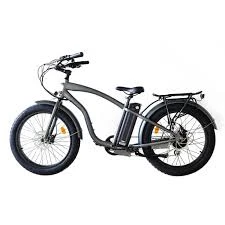
- Afrikaans
- Albanian
- Amharic
- Arabic
- Armenian
- Azerbaijani
- Basque
- Belarusian
- Bengali
- Bosnian
- Bulgarian
- Catalan
- Cebuano
- Corsican
- Croatian
- Czech
- Danish
- Dutch
- English
- Esperanto
- Estonian
- Finnish
- French
- Frisian
- Galician
- Georgian
- German
- Greek
- Gujarati
- Haitian Creole
- hausa
- hawaiian
- Hebrew
- Hindi
- Miao
- Hungarian
- Icelandic
- igbo
- Indonesian
- irish
- Italian
- Japanese
- Javanese
- Kannada
- kazakh
- Khmer
- Rwandese
- Korean
- Kurdish
- Kyrgyz
- Lao
- Latin
- Latvian
- Lithuanian
- Luxembourgish
- Macedonian
- Malgashi
- Malay
- Malayalam
- Maltese
- Maori
- Marathi
- Mongolian
- Myanmar
- Nepali
- Norwegian
- Norwegian
- Occitan
- Pashto
- Persian
- Polish
- Portuguese
- Punjabi
- Romanian
- Russian
- Samoan
- Scottish Gaelic
- Serbian
- Sesotho
- Shona
- Sindhi
- Sinhala
- Slovak
- Slovenian
- Somali
- Spanish
- Sundanese
- Swahili
- Swedish
- Tagalog
- Tajik
- Tamil
- Tatar
- Telugu
- Thai
- Turkish
- Turkmen
- Ukrainian
- Urdu
- Uighur
- Uzbek
- Vietnamese
- Welsh
- Bantu
- Yiddish
- Yoruba
- Zulu
Nov . 09, 2024 17:01 Back to list
Guidelines for Properly Adjusting Rear Derailleur on Your Mountain Bike
How to Adjust the Rear Derailleur on Your Mountain Bike
Maintaining your mountain bike is crucial for optimal performance, and one of the key components that may need adjustment from time to time is the rear derailleur. A well-adjusted derailleur ensures smooth gear shifts and enhances the overall riding experience. This article provides a comprehensive guide on how to adjust the rear derailleur on your mountain bike.
Understanding the Rear Derailleur
The rear derailleur is a critical part of a bike's gearing system; it functions to move the chain between the different gears on the cassette. It consists of a cage that holds the chain, a pivot point, and an arm that moves the cage. The derailleur is operated by the shifter on the handlebars, which pulls or releases the cable, making the derailleur shift the chain to the desired gear.
Tools You'll Need
Before you begin the adjustment process, gather a few essential tools
- A 5mm Allen wrench (or the appropriate size for your bike) - Screwdriver (if needed for limit screw adjustments) - A chain checker tool (optional but recommended) - Clean rags - Chain lube
Steps to Adjust the Rear Derailleur
1. Inspect the Derailleur
Before making adjustments, it's vital to thoroughly inspect the derailleur. Look for any signs of damage, such as bent hangers or damaged cables. Ensure the derailleur is clean and free of debris. A clean derailleur will function better and make the adjustment process smoother.
2. Check Cable Tension
One of the most common issues with derailleur performance is inadequate cable tension. If the cable is too loose, the derailleur won’t shift properly. To check cable tension, shift to the largest chainring and the smallest rear cog. The chain should pull taut but not be over-stressed. If you notice slack, use the barrel adjuster (located where the cable housing ends) to tighten the cable.
how to adjust rear derailleur on mountain bike

3. Adjust Limit Screws
Limit screws prevent the derailleur from moving too far in either direction, which can derail the chain or cause it to come off entirely. There are typically two limit screws identified as “H” (high limit) and “L” (low limit).
- High Limit (H) This screw controls how far the derailleur can move towards the smallest cog. To adjust, shift to the smallest rear cog and verify that the chain is aligned correctly over the cog. If it is not, turn the “H” screw until the chain is perfectly aligned.
- Low Limit (L) This screw restricts the movement towards the largest cog. Shift to the largest cog and check alignment. Adjust the “L” screw until the chain is correctly positioned without rubbing against the derailleur.
4. Fine-Tune the B-Screw
The B-screw controls the derailleur's angle and its distance from the cassette. Proper adjustment ensures smooth shifts especially when moving to the larger cogs. While in the largest gear, check the distance between the top pulley of the derailleur and the largest cog. It should be around 5-6 mm. Adjust the B-screw to increase or decrease this distance as necessary.
5. Test the Shifts
Once you’ve made the above adjustments, it’s time to test the shifting. Shift through all gears while pedaling to ensure smooth transitions. If you experience any hesitations or delays, revisit the cable tension and fine-tune as necessary. It may take a couple of cycles of adjustments to achieve perfect alignment and shift performance.
6. Lubricate the Chain
A well-lubricated chain enhances the overall shifting performance. Apply a suitable chain lube to ensure smooth gear transitions. Wipe off any excess lube with a rag to avoid dirt accumulation.
Final Thoughts
Adjusting the rear derailleur on your mountain bike is a straightforward task that can significantly improve your riding experience. Regular maintenance and adjustments will keep your bike running smoothly and prolong the life of your components. With practice, these skills will become second nature, ensuring that you enjoy every ride to the fullest. Whether you’re tackling steep trails or cruising down scenic paths, a well-adjusted derailleur will make all the difference. Happy biking!
-
The Ultimate Kids' Four-Wheeler Experience
NewsJul.09,2025
-
The Ultimate Guide to Mountain Bikes: Gear Up for Your Ride
NewsJul.09,2025
-
The New Age of Cycling: Electric Bikes for Every Rider
NewsJul.09,2025
-
The Best Kids Bicycles: Ride in Style and Safety
NewsJul.09,2025
-
The Best 3-Wheel Scooters for Kids: Fun, Safety, and Adventure
NewsJul.09,2025
-
Revolutionize Your Ride: Affordable Electric Bikes
NewsJul.09,2025
-
Finding the Perfect Mountain Bike for Every Rider
NewsJul.09,2025



